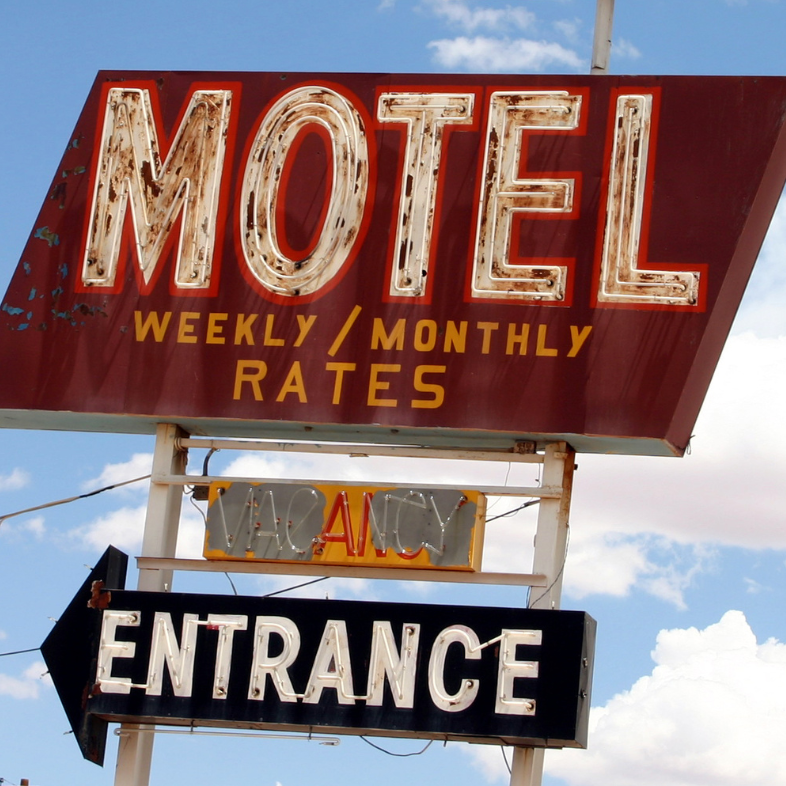Contact Us
1300 76 78 02A Look Back: The History of 1950s Motels in Regional Australia 4371
In the 1950s, motels in Australia were more than simply a place to rest; they were a representation of liberty, development, and the open road, from the dust of regional highways to the brilliance of neon "NO VACANCY" signs. Motels became ingrained in Australian culture as the number of cars on the road increased and the traditional road trip gained popularity, particularly in small communities where demand and opportunity converged.
The birth of the Aussie motel
Australia started implementing the idea in the late 1940s and early 1950s after being influenced by American "motor hotels." With drive-up access, private rooms with restrooms, and all the amenities a visitor could want for a comfortable overnight stay, these one-story roadside accommodations were built with convenience in mind.
The increasing number of privately owned cars altered the long-distance transport landscape at a period when trains still dominated the market. Families could finally head off on adventures at their own pace, and Australia’s vast landscape begged to be explored. Motels, which provided secure, easily accessible, and cozy lodging, soon sprung up along main thoroughfares.
Regional towns that put motels on the map
These towns were more than just stopovers; they were thriving hubs of regional business and culture, and their early use of motels contributed to the development of regional travel in Australia.
Albury, NSW - The Border Beacon
Albury is a crucial intersection between Sydney and Melbourne, situated on the Hume Highway on the north bank of the Murray River. Albury was already a prosperous city in the 1950s, with a solid agricultural foundation and expanding tourism. Motels such as the Siesta Resort provided a high-end substitute for conventional hotels and caravan parks as traffic grew. The Siesta revolutionized the design of regional motels with its Spanish Mission style.
Wagga Wagga, NSW - Crossroads of the Riverina
Known as the largest inland city in NSW, Wagga Wagga became a strategic stop for travellers exploring the Riverina. The need for housing increased dramatically in the years following the war as a result of the military base at Kapooka and Charles Sturt University, which attracted individuals from all over the nation. Along the Sturt Highway, motels became commonplace for families, business travelers, and military personnel.
Ballarat, VIC - gold rush to road stop
Ballarat had fully moved past its Gold Rush peak by the 1950s, but its opulent Victorian streetscapes and cultural allure persisted. As domestic travel increased, more people traveled to Sovereign Hill, the Botanic Gardens, and Lake Wendouree, which made motels a convenient and alluring option for quick visits. Ballarat motels became a necessity for weekenders fleeing Melbourne.
Mildura, VIC - Sun, Citrus, and a Good Night's rest
In the 1950s, this riverbank village was a major hub for both tourist and citrus production. Paddle steamers, the Murray River, and the pleasant weather drew tourists. Motels were popular in Mildura early on, and many of them had BBQ areas, saltwater pools, and covered courtyards. In a secluded area of Victoria, it offered a taste of laid-back country grandeur.
Dubbo, NSW - Gateway to the West
Due to its position, Dubbo was a major hub for people traveling farther interior. With its rich Indigenous history and the Taronga Western Plains Zoo (which opened later in 1977), Dubbo attracted tourists from all across the nation. In order to accommodate the expanding number of road travelers, tradespeople, and industry traffic, motels sprung up along Cobra Street.
Toowoomba, QLD - the garden city goes modern
By the 1950s, Toowoomba, which is situated on the edge of the Great Dividing Range, had established itself as a major regional force. It attracted tourists all year long because of its Carnival of Flowers and lovely gardens. In order to handle the increasing number of families, traveling representatives, and rural tourists seeking comfortable, hygienic places to stay overnight in the cool mountain air, motels started to appear along main thoroughfares like Ruthven Street.
The classic Motel experience
A standard motel room in the 1950s had the following amenities:
· Private en-suite bathroom, which was considered a luxury at the time
· Cozy double bed with simple furniture
· Tea and coffee station (hey, Arnott's biscuits)
· Radio or television, if you were lucky!
· Parking just outside your door
It was all about practicality with a dash of style. You may arrive, check in, and relax without having to carry your things through hallways or foyers. Road trips with the family were common, and motels provided a sense of home away from home.
Motels today: still a smart investment
Even though the idea originated in the 1950s, hotels are still popular today. In actuality, the sector has demonstrated its resilience:
· Estimated value: $3.9 billion by 2025
· The compound annual growth rate (CAGR) from 2020 to 2025 is 6.9%
· Companies in operation: More than 2,000 motels in Australia
· Increasing rates: during periods of high demand, regional motels charge $180+ per night
· Modernisation: To appeal to new traveler groups, many older motels are being renovated with eco-friendly features and smart technology
Australia's fondness for motels—which are nostalgic, affordable, and full of character—has been rekindled by the move toward regional and domestic tourism following COVID.
1950s in focus: visual time travel
The essence of Australian roadside motels in the 1950s is captured in this realistic photograph. It's the ideal freeze-frame of a bygone era of Australian tourism, complete with a single story, vintage cars, prominent "MOTEL" lettering, and a couple of tourists stopping for a conversation.
Sources
This article is a blend of researched insights and public information gathered from reliable online sources, industry commentary, and regional tourism history. It’s designed to give you an authentic snapshot of Australia’s iconic motel era—without the jargon.

